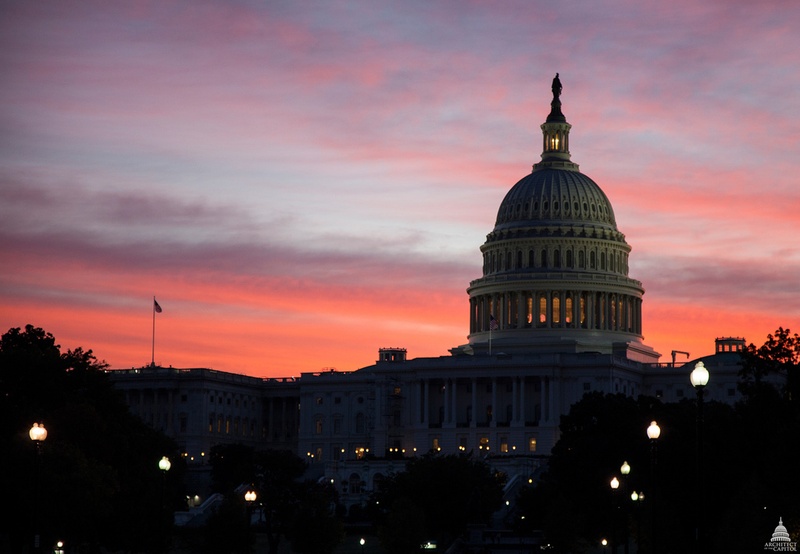OpenGov Voices: Transparency is not just television

In 2009, Larry Lessig published a headline-grabbing piece in the New Republic entitled “Against Transparency,” arguing that the “naked transparency movement” might inspire disgust in, rather than reform of, our political system. In their recent Brookings Institution paper, “Why Critics of Transparency Are Wrong,” Gary Bass, Danielle Brian and Norm Eisen rightly critique the latest generation of naysayers who contend that transparency has contributed to our political ills, and that efforts to reduce transparency will cause government to work better. The problem with suggesting that transparency is the root of extreme partisan gridlock, the absence of dealmaking, and the lowest rates of trust by the American people in Congress, however, is that there is no real transparency in that institution.
If there is any shortcoming in Bass, Brian and Eisen’s robust defense of transparency, it is that they should be even tougher in rapping these other writers across the knuckles, including for some critics’ unsophisticated equation of television cameras in the chamber with transparency.
Even in our media-savvy age, televising congressional deliberations (if you can call them that) – what we might call political transparency – surely contributes too little to policy transparency. It lays bare the spectacle but does not provide access to the kinds of information disclosures about the workings of Congress in a way that also affords people an opportunity to participate in changing those workings and that Bass, Brian and Eisen also support. Done right, transparency provides an empirical foundation for developing solutions together. If the Brits can have a 21st Century parliament initiative, we are long overdue for a 21st century Congress.
By contrast to legislative practice, take the example of the physician in Camden, N.J., so vividly chronicled by New Yorker writer and physician Atul Gawande. By using data from Camden’s three main hospitals, the doctor was able to uncover the “hot spots” of patient hospitalizations and, in so doing, revealed that just one percent of the 100,000 people who used the city’s healthcare facilities accounted for 30 percent of its costs. Then the doctor started treating those patients. Similarly, the National Health Service in the U.K. gives patients and providers access to information about all heart surgeries carried out in the U.K., directly leading to 1,000 fewer deaths in heart surgery units each year. Similar results have been achieved in Germany and Sweden, where public reporting of health data has significantly improved a variety of health outcomes. In these instances, government bodies are opening up data, enabling people to make change happen. There has been little of the open data revolution we’ve seen driving better outcomes in the administrative branch in legislatures.
Indeed, televising Congress in (in)action surely offers no proof of full transparency – not when we easily could, but have yet to make the text of all legislation available in the form of bulk, downloadable datasets, which would allow innovators to produce better ways of reading, analyzing, and visualizing legislation. THOMAS does make bills accessible bill-by-bill. But it is cumbersome to use. As of now, despite longstanding demands across the political spectrum to open up access to legislative data, the best sourcesfor such bulk legislative data are still third-party providers like GovTrack.us, Sunlight Foundation and OpenCongress.org, not the official THOMAS website. There has been a promise to make some legislative data finally available in bulk next year but also some foot-dragging.

It did not have to take this long. Just consider the Federal Register, which started publication on March 14, 1936 with a 16-page paper featuring an initial entry by President Roosevelt about how Bull Island in South Carolina, pursuant to the Migratory Bird Conservation Act, would be reserved for the use of the Department of Agriculture. In 1946, all federal agencies were required to use the Federal Register for all Notices of Proposed Rulemaking, which turned the system from a mere register of rules into an opportunity for comment by the public, as well as the official means of notification of the public by the U.S. Government – in effect, the legal newspaper of the U.S. government. Until recently, however, this crucial part of our democracy was a very dense PDF file of poorly formatted text, none of which was suitable for reading on-line. Navigation was primitive, search capability limited and interactive mechanisms nonexistent.
In late 2009, the Register made 10 years’ worth of editions available as a bulk data file for free as a download on Data.gov, foregoing the $17,000 annual subscription fee previously charged.
Sitting in a coffee shop in San Francisco in April 2010, Dave Augustine, Bob Burbach and Andrew Carpenter happened upon Sunlight’s “Apps for America” contest, which called for making a useful tool with a government dataset. The Federal Register was the largest file available on Data.gov. The trio thought they could make the Register look better and thereby more accessible. Their prototype only won second place in the contest, but Register officials liked it so much they called Dave, Bob and Andy and commissioned a redesign. These three, part-time “citizen coders” (they didn’t quit their day jobs) ended up making the actions of the executive branch of government truly accessible to the American people for the first time.
Congress has still done no such thing. If we had better transparency in Congress and across legislatures, we would also, for example, have ready access to an archive of all the formal letters that members of Congress write to executive branch agencies. Members of Congress use letters to federal agencies to express their points of view and attempt to influence decisions relating to rule-writing, enforcement, contracting, appointments and customer service. These communications represent a key mechanism by which members try to shape policy, yet we have no simple, easily accessible way to discover which members have written to which agencies on which issues. Having access to Congress’s letter-writing history could be an untapped way of gauging the track-record of individual members while also illuminating patterns of influence by lobbyists and outside groups. Some cities already make it easy to access their leaders’ correspondence.
Further, if there were effective transparency in Congress, we would also have better tools to craft legislation in the open and making the drafting process more transparent. The Cato Institute’s Deep Bills project has been at the forefront of providing useful data about congressional legislation, including advocating the inclusion of more neutral information about legislation on Wikipedia. Congress itself has done nothing to reduce the opacity.
If we pushed for more true transparency, we would likely have much better ways to enable the American people to participate directly in the legislative drafting process. This is not a pipe dream. In Finland, Open Ministry helps citizens develop proposals for consideration before the parliament. In Iceland, the Constitutional Council, which is tasked with creating a more modern constitution, solicited citizen feedback throughout the drafting process. Each week, the Council posted a new proposed clause online, allowing citizens to comment or wholly rewrite the section. In Latvia, Mana Balss (My Voice) gives citizens a chance to set the debate agenda for their representatives, and Latvian politicians have agreed to debate any citizen-created petition submitted to Mana Balss that receives over 10,000 votes of support from other users. Just last month, the Buenos Aires city council introduced the Demos Project using DemocracyOS, a platform on which citizens debate and propose changes to bills, which representatives are then committed to discuss and consider.
If there were transparency in Congress — which took citizen participation seriously — we would make the research of the Congressional Research Service available to the public. There have been repeated calls to do so and even some recent disclosures. Even better would be making such reports available prior to publication as pre-prints for public comment in order to improve the information and advice that goes to a Congress that is lamentably short of relevant expertise. In “How Do They Know,” a 2012 report, Lorelei Kelly explained the urgent need for legislators to have both more access to information and to information curators who can identify innovative ideas, sort fact from fiction and transform the glut of information into useful, independent knowledge for decision-making on an ongoing basis. It will, indeed, take much study and experimentation to understand how to translate more transparency into effective collaboration and, in turn, into better parliamentary institutions.
By itself, adding televisions to the chamber guarantees neither transparency nor accountability. It is like inviting a hungry guest to peer in through the window, but never sit down at dinner.
Nor does it help us understand precisely when and in which contexts more effective forms of transparency not only do no harm, but actually lead to better and more democratic outcomes.
Bass, Brian and Eisen, in fact, point out many instances in the executive branch where administrative institutions have provided information openly and in a form that consumers and regulators can use it. We’ve seen little, however, of this embrace of open government in Congress. What we need now is concrete evidence, based on experience, that our problem has been far too little transparency in the legislative chamber, not too much.
Beth Simone Noveck directs The Governance Lab and its MacArthur Research Network on Opening Governance. Noveck is also the Jerry Hultin Global Network Visiting Professor at New York University’s Polytechnic School of Engineering and a professor of law at New York Law School. She served in the White House as the first United States Deputy Chief Technology Officer and director of the White House Open Government Initiative (2009-2011). UK Prime Minister David Cameron appointed her senior advisor for Open Government, and she served on the Obama-Biden transition team. Among projects she’s designed or collaborated on are Unchat, The Do Tank, Peer To Patent, Data.gov, Challenge.gov and the Gov Lab’s Living Labs and training platform, The Academy. She is a member of the Advisory Board of the Open Contracting Partnership. She was named one of the “Foreign Policy 100″ by Foreign Policy, one of the “100 Most Creative People in Business” by Fast Company and one of the “Top Women in Technology” by Huffington Post. She has also been honored by both the National Democratic Institute and Public Knowledge for her work in civic technology. Noveck is also the author of “Wiki Government: How Technology Can Make Government Better, Democracy Stronger and Citizens More Powerful.” Her next book, “Smart Citizens: Smarter State, will appear with Harvard University Press. She tweets @bethnoveck.
Interested in writing a guest blog for Sunlight? Email us at guestblog@sunlightfoundation.com

